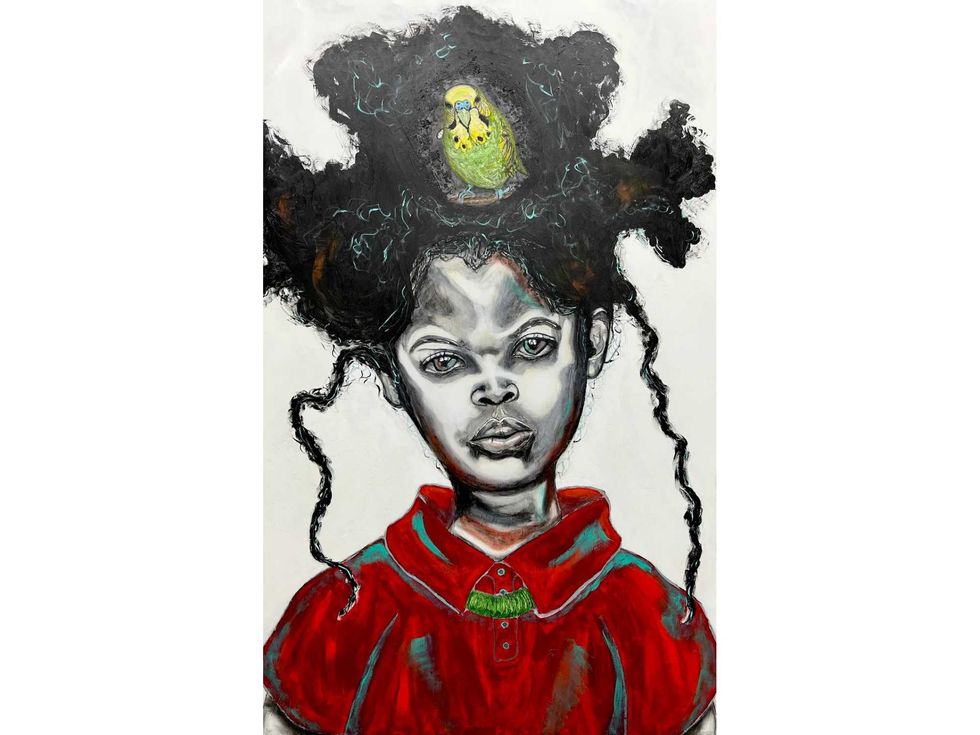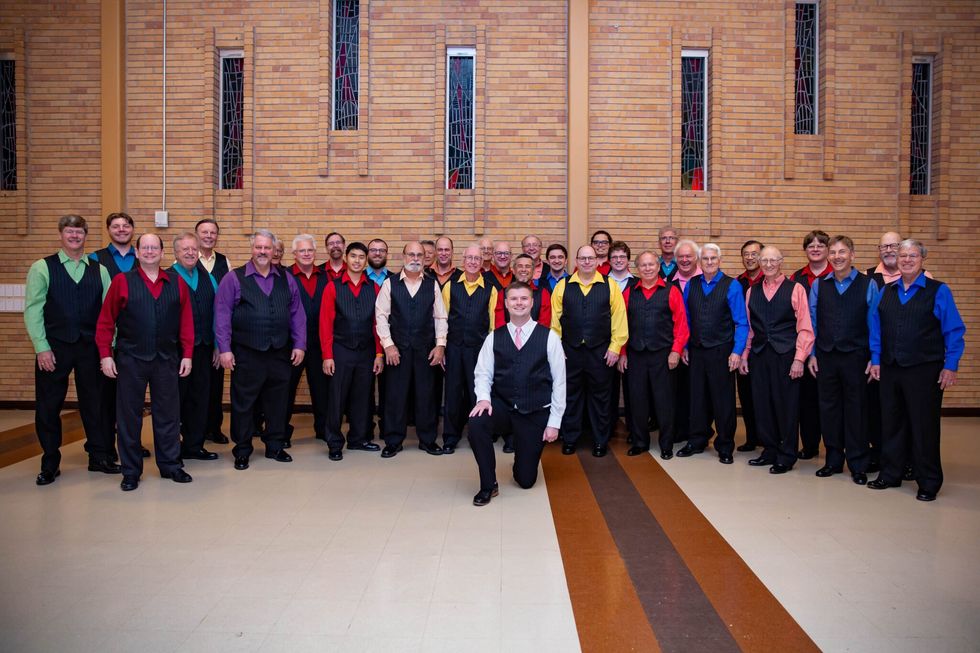The heat never leaves
9500 Liberty director Annabel Park looks back on her humble Houston beginning
 Annabel Park's parents used to own a taco restaurant in Houston.Photo by Mona T. Brooks
Annabel Park's parents used to own a taco restaurant in Houston.Photo by Mona T. Brooks Park directed "9500 Liberty," which takes on the immigration battle.
Park directed "9500 Liberty," which takes on the immigration battle.
For filmmaker Annabel Park, the Korean-born, Houston-raised co-director of 9500 Liberty, the hardest part of revisiting H-Town this week has been reacclimating herself to the summer weather.
“I’m definitely enjoying my visit,” she told Culture Map a few days ago. “But the heat is… taxing.”
Not that Park is averse to catching heat while covering incendiary situations. While filming 9500 Liberty, the critically acclaimed documentary opening this weekend at the Angelika Film Center, she and Eric Byler, her partner and co-director, took an up-close look at the inflamed passions and hot-button issues that defined an explosive battle over U.S. immigration policy in the unlikely battleground of Prince William County, Virginia.
In 2007, long before Arizona passed its controversial state law to broaden the power of police officers to detain suspected illegal aliens, Prince William officials — prodded by, among other local groups, an organization known as Help Save Manassas — adopted an ordinance requiring police officers to question anyone they had "probable cause" to suspect was an undocumented immigrant.
The legislation polarized an already divided community, leading to unintended consequences — some local businesses saw their customer base decline when Hispanics, documented or otherwise, left the community — and triggering a grassroots pushback against the law.
Park — who’ll have a Q&A session after the 7:20 pm Friday screening of 9500 Liberty at the Angelika Film Center — lived in the Maryland area near Prince William County while in her teens. She didn’t realize she was approaching a sociopolitical ground zero when she moved back to the area in 2007. But, then again, when you’re a filmmaker in the right place at the right time …
Park discusses it all in an exclusive interview with CultureMap.
CultureMap: How did you and your partner Eric Byler become aware of this situation in Prince William County
Annabel Park: Well, I had just decided to move back to Maryland from L.A., actually. So I was already living there in 2007 when the situation blew up. And Eric was also living in the area, in Prince William County itself. And we were reading about this situation in The Washington Post.
But it still didn’t make a lot of sense to us. Like, why is this happening in this suburb of D.C., thousands of miles away from the border? It really didn’t seem to make a lot of sense, that it was happening in this wealthy suburb, this bedroom community, that it would turn into this sort of culture war situation. Where people were screaming at each other, and basically trying to get people to leave.
The term that they used was “self-deport.” And the strategy was to kind of create this situation where some people would be afraid to be in the county, and choose to leave. So we decided to investigate this group called Help Save Manassas.
CM: After you did some investigating, you found out many of the Hispanic residents had moved there to be construction workers during the housing boom. But, what, they’d outlived their usefulness?
AP: Absolutely. The Hispanic workers came to build the houses. And then when the housing boom started to go bust, in around 2006, I think that’s when the tension started to build. So that by the time we got to the summer of 2007, the long-time residents started looking more closely at the Hispanic residents. And since there were more people looking for jobs because of the economy, there was more of a feeling of, hey, we’ve got to get rid of these people.
But they weren’t really looking at all the connections, they weren’t thinking of it comprehensively. They weren’t thinking, “The houses that we live in were built by these people we want to send away now.”
CM: When you started out, you and Eric were filing regular reports on YouTube, correct?
AP: Yeah, initially we thought we were just going to do a regular documentary. But then when we saw that part of the problem in the country was lack of information, or misinformation, or just so many things happening, we decided that it would be kind of irresponsible for us not to share all this information we were gathering. I think this really speaks to the power of visual information, because, you know, The Washington Post reporter can’t really describe what the Help Save Manassas meetings are like.
But when we turn the camera on the audience, you can see for yourself what the people at these meetings are like, and you can draw your own conclusions. Because if the Washington Post reporter wrote, “They are mostly older white angry people,” the editor would say, “We can’t say that.” But with the camera, people can see for themselves what it feels like to be in that room.
CM: Your movie shows that the local police chief warned this new “probable cause” law was unworkable, impractical — and could lead to lawsuits by folks claiming racial profiling. Which is ironic, considering that some of the same warnings have been sounded by police chiefs in Arizona in the wake of the crackdown on illegal immigrants there.
AP: The funny thing is, we’ve shown this film at a conference for police chiefs from throughout the country. And we had a discussion afterwards. And they all said: “Even if we wanted to, we don’t have the resources to enforce immigration law. It would impede our police officers from doing their job of fighting crime.” Because, of course, it would hurt their relationship with the minority community.
And not just the Hispanic community. Of course, the reception might be different when we show it to a conference for sheriffs. Because sheriff is an elected position. So they have to be a bit more political. Whereas police chiefs are appointed. And they’re government servants, so they have to think long-term.
CM: As it turned out, as you show in your film, even many conservative folks in Prince William County wound up objecting to the law, and fighting for its repeal.
AP: I really don’t think people considered the practical aspects of this law. In theory, yeah, I can understand there are people who are concerned because there are undocumented people here. They want to do something. But to do something is different from choosing this law at this time.
When there’s really no budget for it, and it’s very impractical — unless you’re ready to face lawsuits and go into debt. It’s very easy to get people all fired up when you say, “We’ve got to do something about illegal immigration.” You can get a lot of people on board with that idea. But what do you actually do? And how much of it is really feasible and effective? They’re not doing their homework. And that’s what really worries me.
CM: Finally, what are some of your most vivid memories of your childhood in Houston? What defines Houston for you?
AP: Well, we moved here when I was nine, and we left when I was just about to turn 16. I learned English here, I went to elementary school, middle school, started high school here. So I consider myself a Houstonian.
I don’t know if this defines Houston for me. But one of the first things my parents did when we moved to America, when we didn’t speak any English — they bought this fast-food taco place in downtown Houston. So they were making tacos for people working in downtown Houston. And many of them were Mexican laborers, but also people of all different classes as well.
So that was my introduction to America. And I think it says a lot about America that my parents actually were able to do pretty well with that business.
After that, they bought this truck-stop diner on Airline Drive. And that didn’t do as well. But I got to learn to learn a lot about people who were driving trucks and waiting tables and working as cooks.
I think I learned so much from those experiences that it really enriched my understanding of America. That’s what I’m most grateful for. I got to live in those working-class cultures, and really understand where they’re coming from. I feel like they’re my people. I feel like they made me, and the way I see things.
Take a peek at 9500 Liberty:





